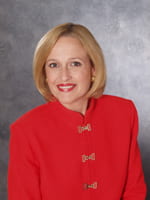 Los Angeles station KCET’s announcement on Friday that it is canceling all PBS programs is a dramatic, all-stakes-on-the-table gamble.
Los Angeles station KCET’s announcement on Friday that it is canceling all PBS programs is a dramatic, all-stakes-on-the-table gamble.
KCET is gambling that, without hefty payments to PBS and substituting a new lineup of independent and international programs for the PBS network feed, it will be a smaller but sustainable public service broadcaster.
For its part, PBS is gambling that KCET cannot possibly go through with its plan and will have no alternative but to pay the substantial dues required to keep PBS programs on the station.
Of course it may all be a multi-million-dollar game of chicken, over – surprise – money. PBS has frozen KCET’s annual dues at $6.8 million, based on the peak for fundraising in Los Angeles several years ago, and the network has refused to reduce the fee to reflect lower revenue at KCET and most other stations, according to Jim Rainey of the Los Angeles Times. KCET maintains it cannot afford to pay that much for programs from PBS or from anyone else. PBS is afraid if they lower KCET’s dues, other stations will also want their payments reduced.
But if KCET does complete its divorce from PBS and become an independent public TV station, PBS will lose one of its largest stations, serving eleven million television viewers [1] – viewers that not so incidentally include the leadership of the U.S. broadcast, movie and music industries.
 And that may mark the end of business as usual at the network: PBS already faces new competition for revenue from its traditional underwriters. Last week the Gates Foundation announced a $1.5 million grant, not to PBS or NPR, but to ABC News, joining the growing list of nonprofits that are supporting commercial broadcasters and newspapers. Absent the KCET audience, underwriters could further question their advertising on PBS and shift resources to for-profit journalism and the arts. And someone in Congress, perhaps from the Los Angeles Congressional delegation, may ask why the federal government sends hundreds of millions of dollars a year to a public broadcaster that has been canceled in the nation’s second largest metropolitan area.
And that may mark the end of business as usual at the network: PBS already faces new competition for revenue from its traditional underwriters. Last week the Gates Foundation announced a $1.5 million grant, not to PBS or NPR, but to ABC News, joining the growing list of nonprofits that are supporting commercial broadcasters and newspapers. Absent the KCET audience, underwriters could further question their advertising on PBS and shift resources to for-profit journalism and the arts. And someone in Congress, perhaps from the Los Angeles Congressional delegation, may ask why the federal government sends hundreds of millions of dollars a year to a public broadcaster that has been canceled in the nation’s second largest metropolitan area.
After 43 years, it may be time for a change: Once children are old enough to graduate from “Sesame Street,” they leave, and only a few return to PBS – and then not until they are on Social Security. Students and others I have interviewed say there’s nothing on PBS that appeals to them, and the Nielsen numbers bear them out: the PBS audience is centered in the “65+” demographic – ie, viewers over 65 years old – and not many of those older viewers are choosing to watch
For one insight into how and why PBS has spiraled down in its prime time audience, look at the PBS website. On the left side of the home page, look at “PBS Primetime.”
The television industry defines prime time as 8-11 p.m. Eastern and Pacific, 7-10 p.m. Central time. So ignore the NewsHour and “Nightly Business Report,” which are broadcast by PBS at 6 p.m., even if some stations broadcast them on tape delay at 7 p.m. or even later. (But in a moment you will understand why PBS lists it under “prime time.”)
You will notice a program titled “Need to Know.” Never heard of it? You’re not alone: A check of the top PBS stations — WNET in New York, KCET in Los Angeles, WTTW in Chicago — indicates the program airs on Sunday mornings if at all. (But in a moment you will understand why PBS lists this, too, under “prime time.”)
Now look at what remains: ten programs, from “American Experience” to “Washington Week.” It is an aging lineup of programs that even some PBS general managers criticize as urgently needing innovation.
Look at the list again.
Quick, can you name a woman who hosts or anchors any of those programs?
Okay, anyone besides Gwen Ifill?
Don’t stress out: when Ifill was hired by WETA and MacNeil/Lehrer Productions, she became the only woman on PBS in prime time. Before Ifill, the last woman to host a PBS prime time program was Diana Rigg, who used to host “Mystery;” Rigg was replaced by Alan Cumming.
And that is why PBS lists the NewsHour, “Nightly Business Report” and “Need to Know” under “PBS Primetime” – each of those programs has hired women, such as Gwen Ifill, so PBS management can claim to have women and minorities in prime time.
 At an event here in Washington last week, Paula Kerger (pictured left), President of PBS, was asked where her network now has any prime time programs hosted, anchored or featuring women. She repeatedly pointed to the NewsHour, Washington Week and “Need to Know,” claiming they are in prime time. Kerger also said PBS was planning a new program that might be (not would be) hosted by a woman.
At an event here in Washington last week, Paula Kerger (pictured left), President of PBS, was asked where her network now has any prime time programs hosted, anchored or featuring women. She repeatedly pointed to the NewsHour, Washington Week and “Need to Know,” claiming they are in prime time. Kerger also said PBS was planning a new program that might be (not would be) hosted by a woman.
At that same DC forum last week, there were two glimpses of how the debate about U.S. public television might evolve in the future.
Nicholas Lemann, Dean of the Columbia University Graduate School of Journalism, speculated that truly public media were found on the Internet, not on television, because the Internet has no barrier to entry – anyone can create, and everyone can watch or participate. But if that is so, that raises the question of why US taxpayers pay hundreds of millions of dollars a year for public broadcasting.
The polar opposite argument was made by Mark Thompson, Director General of the British Broadcasting Corporation. He urged public broadcasting to focus not only on “market failures,” but instead to produce mainstream light entertainment. After all, the BBC uses its tax money to produce situation comedies and police dramas, competing with commercial media for large audience ratings. Of curse the logical extension of this argument is that the U.S. government should buy or start a movie studio to produce the same shoot-em-ups and gross-out comedies that dominate movie box offices.
Perhaps most damaging, if KCET can survive with its new mix of local broadcasts, independent programs and international productions, this will provide an example to PBS stations around the country that there is a viable alternative to the paying the network hefty fees for the PBS feed.
“KCET will continue to air the non PBS series that are already on our schedule,” according to the station’s web site, “like BBC World News, ‘MI-5,’ ‘Globe Trekker’ and ‘Doc Martin,’ plus adding new shows in the same genres that we know our viewers love from national and international sources.”
It’s a bold move by KCET.
And after decades of business as usual, it may be time for reexamination and innovation.
Disclosure: I worked at PBL, which is considered by the Corporation for Public Broadcasting to be the very first national public television program, from its premiere on November 5, 1967 (see, for example, the time line here). After PBL, I spent more than sixteen years in commercial broadcasting, most of that at CBS News, before returning to public broadcasting, first to run NPR News.
Then I managed two PBS stations, one in San Francisco and another in Washington D.C., both “independent” public stations, as KCET plans to be. At both of those stations we programmed prime time without using any of the programs listed on the PBS web site as “PBS Primetime.” Instead, we programmed locally produced news, public affairs and cultural programs, along with independent national and international productions not usually seen in prime time – exactly the program strategy KCET is planning – and most of these programs were and are hosted or anchored by women or minority journalists and performers. They also attracted audiences that do not normally watch “Masterpiece” or “Antiques Roadshow” (both actually British broadcasts or Americanized productions of UK programs).
These schedules were to create truly alternative television services and to fulfill the original explicit purpose of federal funding for PBS and NPR: “to serve the underserved.” And watching recordings today of those PBL broadcasts of 43 years ago, one can see that public television’s future promise may be found in its past.
This is according to the source cited by the government: “Market Survey Schedule and Population Rankings,” Arbitron, Page 8.